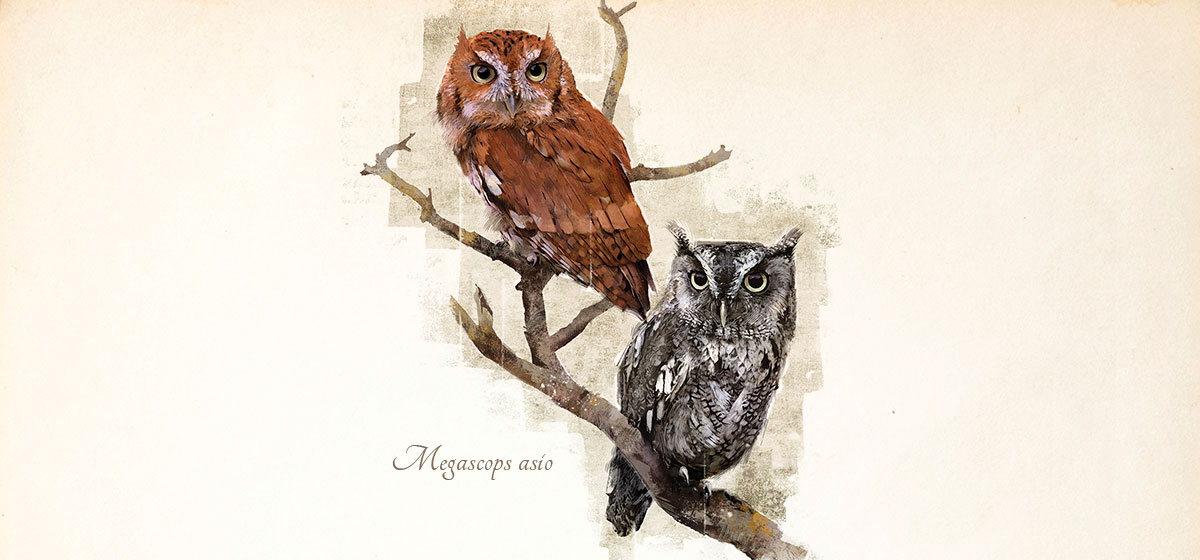
The medical residents were gathered in the library of the house on Pembroke Place in Shadyside for their monthly journal club when a knock came at the home’s entrance. After a brief exchange, there was a strange request: “Doctors,” said the convening surgeon, “we’re needed next door. There is an unusual intruder.”
It seems an eastern screech owl had managed to find its way into the house and the surprised and perplexed neighbors needed a hand getting it out. How the surgical trainees solved the problem of extricating the owl has been forgotten, nor was it discovered how the owl managed to get into the house in the first place. But ever since my wife Anna shared her childhood memory with me, I’ve been delighted with the tale, imagining the owl staring at the doctors, the doctors at the owl, and the hijinks that must have ensued.
Eastern screech owls are common year-round residents in western Pennsylvania. I’ve seen them nesting in backyards, heads poking out from tree hollows. I’ve watched fledglings cavort in the trees of Frick Park. And I’ve heard them on many a night in my own suburban backyard.
The call of the eastern screech owl sounds less like a screech and more like a whistled cry or even, sometimes, a tremulous bounce. It’s a tiny sound, the kind that could easily go unnoticed. It doesn’t have the presence or volume of a deep hoot. Eastern screech owls use their vocal abilities to defend small territories and male and female pairs, usually mated for life, blend their voices in synchronized courtship duets. Eastern screech owls also produce unique calls at dawn and dusk, calls to alert young that food is on its way, alarm calls, and barking noises in flight.
While it’s generally easier to hear an owl than see one, eastern screech owls are fairly simple to spot. They stand just bigger than the size of an open hand. Screech owls have funny little horns, feathered tufts that they can raise and lower like fluffy antenna. Some people mistake them for ears, but these tufts serve no auditory purpose. Instead, scientists believe they help break up the silhouette of the owl like an avian camouflage. Color helps conceal this small predator, too. Eastern screech owls come in either a gray phase or a rufous phase and blend in well enough that suburban backyards and city parks offer equally good habitat to find them. The problem is that they’re generally nocturnal, so a flashlight can help. Once you can identify its whinnying call and locate it in the dark, a flashlight beam will allow you to watch it as they hunt and feed, though to avoid disturbing it, don’t spotlight it for long.
What will stand out the most in that beam are their bright eyes, apt to reflect your flashlight. With big black pupils encircled by a yellow iris, eastern screech owl eyes have lots of light-gathering rods and are shaped by unusual bones called sclerotic rings, which make the owl’s vision especially acute. The bones also make it impossible for owls to move their eyes the way we do, so they rotate or gyrate their whole heads instead, including that wonderful ability, thanks to extra neck vertebrae, to spin 270 degrees. Insects, small rodents, birds and reptiles beware! The owl is watching. Maybe from atop your bookcase right now!
Email your avian encounters, photos or questions to PQonthewing@gmail.com.





